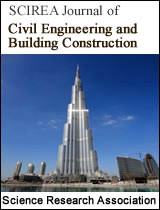Choice of Ventilation System of Apartment Building
DOI: 10.54647/cebc56075 94 Downloads 14071 Views
Author(s)
Abstract
The air quality in the premises with the presence of people affects the performance and health of a person. In the context of the spread of infections and various respiratory diseases, air exchange in the room, the presence of fresh, clean air become a mandatory requirement to prevent the development of diseases. During the construction of apartment buildings, an important issue is the choice of ventilation systems to ensure comfortable and safe living conditions for people. For many years, natural exhaust ventilation systems have been used in apartment buildings in many countries. Practice and our research show the inefficiency of natural systems, especially when the outside air temperature is above +5 degrees Celsius. In this work, the analysis of mechanical and natural ventilation systems is carried out; their advantages and disadvantages are revealed on the basis of the experience in the construction of apartment buildings of the PIK Group of Companies. Unfortunately, for many developers, the economic component is crucial. A separate economic justification requires a comparison of costs. So with an increase in capital costs (the cost of fans, but a lower consumption of air ducts due to higher air velocity), the area of apartments is freed up due to the smaller size of the shafts for air ducts.
Keywords
Natural Ventilation, Mechanical Ventilation, Apartment Buildings, Ventilation System, Developer
Cite this paper
Alexey Busakhin,
Choice of Ventilation System of Apartment Building
, SCIREA Journal of Civil Engineering and Building Construction .
Volume 7, Issue 1, February 2022 | PP. 27-39.
10.54647/cebc56075
References
| [ 1 ] | SP 60.13330-2020 “Heating, Ventilation and Air Conditioning” (Moscow, 2020). |
| [ 2 ] | SP 131.13330.2020 Building climatology (Moscow, 2012). |
| [ 3 ] | E. I. Tertichnik, Ventilation (Moscow, 2015). |
| [ 4 ] | Designer handbook. Internal sanitary facilities. Part 3. Ventilation and air conditioning. Book 2 / Ed. N. N. Pavlov, and Y. I. Shiller (Moscow, 1992). |
| [ 5 ] | Natural ventilation of residential buildings. URL: https://www.abok.ru/for_spec/articles.php?nid=67 |
| [ 6 ] | SP 54.13330.2021 “Multicompartment residential buildings” (Mjscow,2020). |
| [ 7 ] | O. Ya. Kokorin, Modern air conditioning systems (Moscow, 2003). |
| [ 8 ] | A. A. Rymkevich, System analysis of optimization of general ventilation and air conditioning (Saint Petersburg, 2003). |
| [ 9 ] | V. K. Savin, Building Physics: Energy Transfer, Energy Efficiency, Energy Saving (Moscow, 2005). |
| [ 10 ] | GOST 22270-2018 Heating, ventilation and air conditioning systems. Terms and definitions. |
| [ 11 ] | V. A. Zhila, E. A. Gusarova, D. M. Gulukin, Scientific review 20, 38-44 (2017). |
| [ 12 ] | V. A. Zhila, E. B. Solovieva, D. M. Gulyukin, Scientific Review 22, 27-32 (2016). |
| [ 13 ] | Federal Law of the Russian Federation "On TECHNICAL REGULATION" No. 184-FZ dated 27.12.02. |
| [ 14 ] | TECHNICAL REGULATIONS ON THE SAFETY OF BUILDINGS AND STRUCTURES No. 384-FZ DATED 30.12.09. |
| [ 15 ] | Federal Law of the Russian Federation No. 261-FZ of November 23, 2009 "On Energy Saving and on Increasing Energy Efficiency" |
| [ 16 ] | Federal Law No. 190 of 29.12.2004 Town-Planning Code of the Russian Federation. |
| [ 17 ] | SanPiN 1.2.3685-21 "Hygienic standards and requirements for ensuring the safety and (or) harmlessness of environmental factors for humans" |

